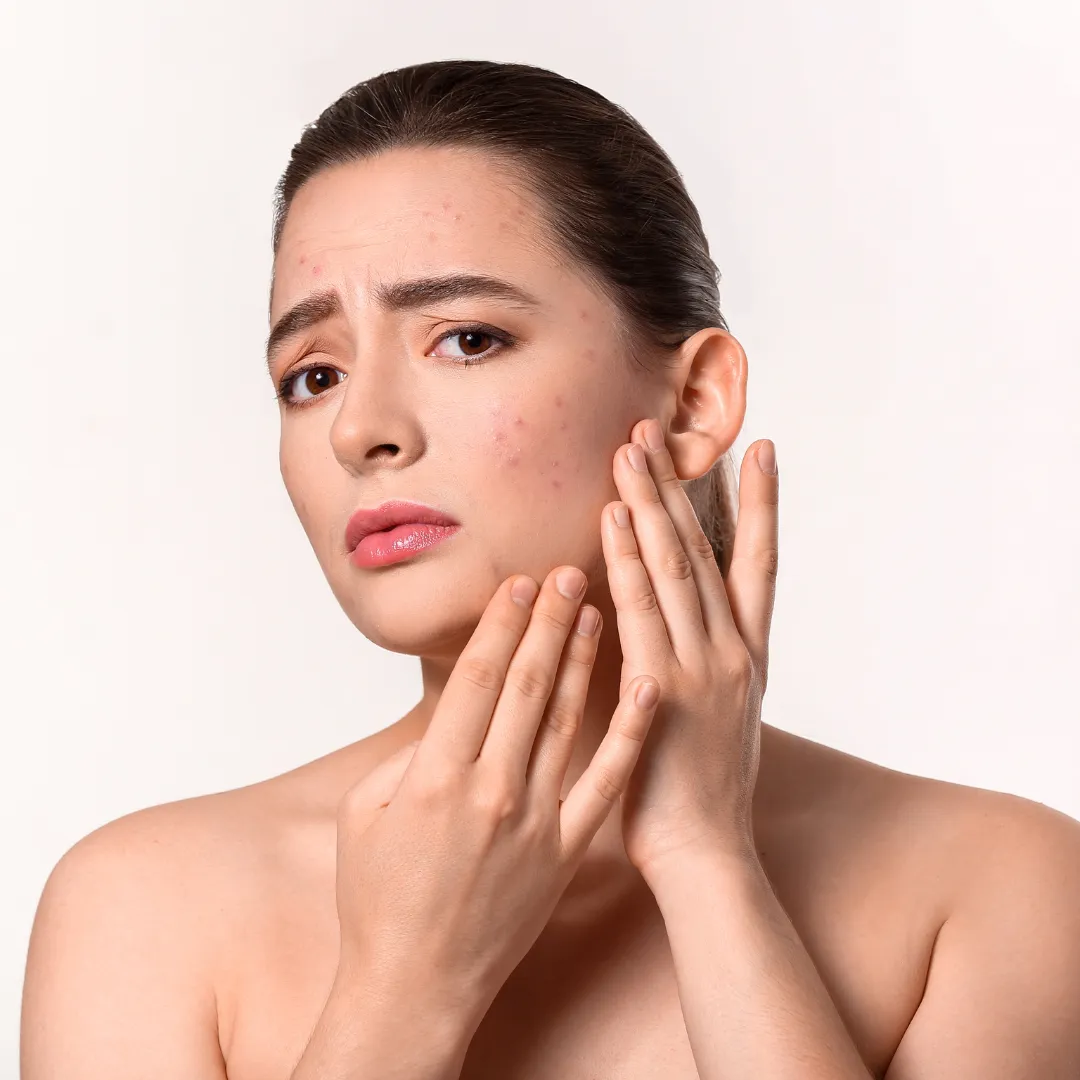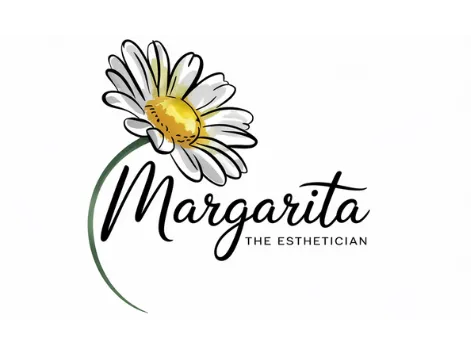
What Causes Adult Acne (and How to Treat It Safely)
Why Adult Acne Happens (Spoiler: You’re Not Losing It)
Let’s get real: you’ve been dealing with breakouts well into your 20s, 30s, maybe even 40s—or if you’re like me, in your 50s—and it sucks. You might hear people say you’re “too old” for acne—but the truth is, adult acne is super common. In fact, studies show up to 50% of women and 25% of men in their 20s–40s still deal with it.¹
I’m not going to sugarcoat it: adult acne can be stubborn, emotional, and frustrating. But once you understand what’s causing it, and what you can do about it—safely—you’re in the driver’s seat. I’ve crafted this post to help you:
Understand the real causes behind adult acne
Explore safe, effective treatment options
Get easy, skin-building tips & routines
Answer FAQs you’ve been scratching your head over
Let’s get to it—and you can finally feel like your skin is on your side.
Common Causes of Adult Acne
1. Hormonal Ups and Downs
Hormones are a big player in adult acne. In women, fluctuations in estrogen, progesterone, and testosterone throughout the menstrual cycle, pregnancy, or perimenopause can trigger breakouts. When your hormones spike, your oil glands may go into overdrive and clog pores.
2. Stress
Chronic stress leads to elevated cortisol, which tells your skin to pump out more oil—and guess what that does? It feeds bacteria and clogs pores. Plus, stressing out might make you touch your face more or skip your skin routine.

3. Diet and Gut Health
What you eat can play a role. Foods high in sugar, dairy, and refined carbs can raise insulin and hormone levels, increasing oil production. Emerging research also connects gut health to skin health—an imbalance of good vs. bad gut bacteria may worsen inflammation and acne.
4. Inflammatory Skin Conditions
Some conditions like rosacea or eczema overlap with acne-like breakouts, especially on sensitive skin.
5. Comedogenic Products
Using heavy, pore-clogging oils or makeup can cause acne-like blemishes, especially if you’re oily to begin with.
6. Breakouts From Skincare (Purging)
Retinoids and exfoliating acids can cause purging as they speed up skin cell turnover. That initial flare-up eventually leads to clearer skin—around 4–8 weeks in.
7. Lifestyle & Environment
Air pollution, humidity, sweating in tight clothes, and even dirty phone screens and pillowcases can trigger breakouts. Not washing your face after workouts lets sweat sit, clog pores, and worsen acne.
Safe & Effective Treatments for Adult Acne
Over-the-Counter (OTC) Actives
Salicylic acid (BHA): penetrates pores, dissolves oil & blackheads. Start with 0.5–2% in a cleanser or leave-on product.
Benzoyl peroxide: kills acne-causing bacteria. Use 2.5–5%, starting 2–3 times a week to avoid dryness.
Glycolic/lactic acids (AHAs): exfoliate surface skin to reduce clogged pores and improve texture.
Niacinamide: a gentle anti-inflammatory and oil-regulator; great for calming and brightening.
Retinoids (retinol, adapalene): speed up cell turnover, unplug pores, improve tone. Use slowly.
Tip: Introduce one product at a time with a “patch test” to avoid irritating your whole face.
Prescription Options
Topical retinoids (e.g., tretinoin, tazarotene): more powerful, doctor-prescribed forms of retinoids.
Topical antibiotics (clindamycin, erythromycin): reduce bacteria and inflammation—often paired with benzoyl peroxide.
Topical azelaic acid: fights bacteria and redness, and helps fade dark spots.
Oral medications:
Antibiotics (like doxycycline): for moderate–severe cases—used short-term.
Hormonal therapy (e.g., combined birth control, spironolactone): especially helpful for hormone-driven acne.
Isotretinoin ("Accutane"): a powerful option for resistant, severe acne—under close medical supervision.

In-Office & Professional Treatments
Chemical peels: light to medium peels help unclog and refine pores.
Microneedling: encourages collagen for acne scars—done monthly, often with vitamin C serums.
IPL treatments (Venus Versa AC Dual): reduce bacteria/inflammation, fade redness.
HydraFacial: cleanses, exfoliates, and hydrates—especially helpful post- breakout.
Deep Cleansing Facials: manual removal of stubborn blackheads by a trained professional.
Lifestyle Tweaks That Matter
Stick with a gentle cleanser twice daily.
Use non-comedogenic skincare & makeup.
Always wear SPF (mineral sunscreens are skin-friendly).
Boost your gut health: add fiber, fermented foods, or probiotics.
Hydrate & eat wholefoods; limit sugar and dairy.
Manage stress by building in some “me time” — take a walk, listen to calming music, read, or even try coloring (yes, it’s surprisingly therapeutic).
Clean your phone, pillowcases, workout gear regularly.
Build-Your-Own Skincare Routine
Here’s a friendly routine you can adjust—just don’t mix all the active ingredients at once!
Morning Routine
Cleanser: gentle non-foam or mild foam
iS Clinical Cleansing Complex – a lightweight gel that cleans without strippingNiacinamide serum (2–5%)
iS Clinical Pro-Heal Serum Advance+ – contains 2% niacinamide plus L-ascorbic acid and anti-inflammatory botanicalsMoisturizer (oil-free, gel-cream)
iS Clinical Hydra-Cool Serum – light, soothing hydration without heavinessMineral SPF 30+
iS Clinical Eclipse SPF 50+ – broad-spectrum physical sunscreen, great under makeup
Night Routine
Cleanser (or double-cleanse if wearing makeup)
iS Clinical Cleansing Complex again – gentle enough for twice-daily useOTC Treatment (alternate BHA/BP)
PCA Skin BPO 5% Cleanser – use 2–3 nights a week to kill acne-causing bacteria and reduce breakouts.PCA Skin Acne Gel – a lightweight serum with 2% salicylic acid and azelaic acid to unclog pores and calm inflammation. Alternate or spot treat as needed.
Moisturizer
iS Clinical Reparative Moisture Emulsion – calming and barrier-supportive without clogging poresStart retinoid once your skin adjusts
iS Clinical Retinol+ Emulsion 0.3 or 1.0 – a gentle but effective retinol formula with botanical soothers and antioxidants. Great for aging + acne-prone skin without heavy irritation.PCA Skin Retinol Treatment for Sensitive Skin – includes retinol plus niacinamide and inflacin® to calm inflammation. Ideal if you’re new to retinol or prone to redness.
Always introduce retinol slowly—1–2 nights a week at first—and follow with a barrier-supporting moisturizer. Your skin should feel a little dry, but not angry. We’ll decide together what strength and formula fits you best.
Weekly Add-Ons
Exfoliating treatment 2–3x per week
iS Clinical Active Peel System – a powerful two-step home peel pad system with AHA, BHA, and retinol. Helps unclog pores, smooth texture, reduce inflammation, and brighten post-acne marks. Use at night on clean, dry skin.)
Clay mask for noticeable oil
Pair iS Clinical Hydra-Intensive Cooling Masque with a kaolin-based clay mask if neededProfessional facial once every 4–6 weeks
Ask Margarita about AC-Dual treatments, custom extractions, or an iS Clinical Fire & Ice Facial for acne-prone skin.
Tips to Prevent & Reduce Acne Scars
Treat early—don’t pick or pop pimples
Use azelaic acid or vitamin C to fade dark spots
For deeper scars, consider microneedling or RF Skin Resurfacing
Protect with SPF daily—sun exposure can worsen scars and lead to darker pigmentation.
Common FAQs: All Your Acne Questions Answered
Q1: Will my acne ever stop?
Yes—adult acne often calms with age and proper treatment: relevant skincare, stress and lifestyle changes, and addressing gut or hormone issues.
Q2: How long until I see improvement?
You might notice subtle changes in 4–6 weeks. More visible results in 3–4 months. Consistency is key.
Q3: Can dairy or sugar-free diets help?
Cutting back on sugar and dairy can lower insulin spikes and hormones that fuel oil production. Track what foods flare you.
Q4: Is it safe to mix retinoids with acids or benzoyl peroxide?
Start with one active at a time. Once your skin adjusts, you can alternate nights or "layer" carefully, under guidance.
Q5: What about natural remedies? Tea tree oil, apple cider vinegar?
Tea tree oil (5%) can help mild acne but can be irritating. Vinegar is too strong. Always patch test and talk to your esthetician or provider.
Q6: Can I still wear makeup?
Yes. Choose non-comedogenic, lightweight mineral foundations. Wash thoroughly after wearing makeup—never sleep in it.
Q7: When should I see a dermatologist or esthetician?
If OTC steps haven’t helped after 3 months, acne is widespread, severe, or you're concerned about scarring, it’s time to see a professional.
Real-Life Client Story
“I was 34 and dealing with these constant jawline breakouts. I’d tried everything—so it felt hopeless. Margarita recommended monthly facials to help keep my skin clean. I started slow with only a few products and a low‑strength retinol at night. I also followed her advice to cut back on sugar, i added probiotic, and worked on my stress. After 8 weeks, my skin was better than it had been, I felt like myself again. It know it wasn’t just one thing, it was the combo that changed everything.” - Janet
The Safe-First Acne Fix Checklist
Start slow: one active at a time
Avoid scrubs and harsh cleansers
Keep skin hydrated when using actives
Always wear SPF—even on cloudy days
Follow professional guidance for prescription or in-office treatments
Treat underlying stress, diet, gut issues
Don’t touch or pick—let your skin do its thing

Boosting Confidence: Beyond Clear Skin
Clear skin isn’t everything. You deserve kindness, rest, and self-care even with a few breakouts.
Celebrate small wins: a new glow, fewer red spots, better sleep, less headspace spent on breakouts.
This is a marathon, not a sprint. Routine, patience, and small tweaks add up.
When Acne Isn’t Acne
Some “breakouts” might be rosacea, seborrheic dermatitis, or keratosis pilaris. If treatments aren’t working or your skin stings or peels, check in with a dermatologist for a proper diagnosis.
Channeling Your Best Skin—and Life
Adult acne sucks—but it doesn’t define you. With a mild, safe routine, patience, lifestyle changes, and help when needed, you can beat it and feel confident in your own skin—and yourself.
Want help building a custom routine or tackling hormone-driven breakouts? Drop a comment or book a skin wellness session! Your skin deserves attention, empathy, and care—and you do too.
References for this information:
American Academy of Dermatology. (2024, June 19). Acne: Diagnosis and treatment. American Academy of Dermatology. https://www.aad.org/public/diseases/acne/derm-treat/treat/
Pappas A. The relationship of diet and acne: A review. Dermatoendocrinol. 2009 Sep;1(5):262-7. doi: 10.4161/derm.1.5.10192. PMID: 20808513; PMCID: PMC2836431. https://pmc.ncbi.nlm.nih.gov/articles/PMC2836431/
Crous, C., Pretorius, J., & Petzer, A. (2024). Overview of popular cosmeceuticals in dermatology. Skin Health and Disease, 4(2), ski2-340. DOI: 10.1002/ski2.340, https://academic.oup.com/skinhd/article/4/2/ski2.340/7736686
Mayo Clinic. (n.d.). Benzoyl peroxide (topical route). Mayo Foundation for Medical Education and Research.https://www.mayoclinic.org/drugs-supplements/benzoyl-peroxide-topical-route/description/drg-20062425


Comments
0 comments